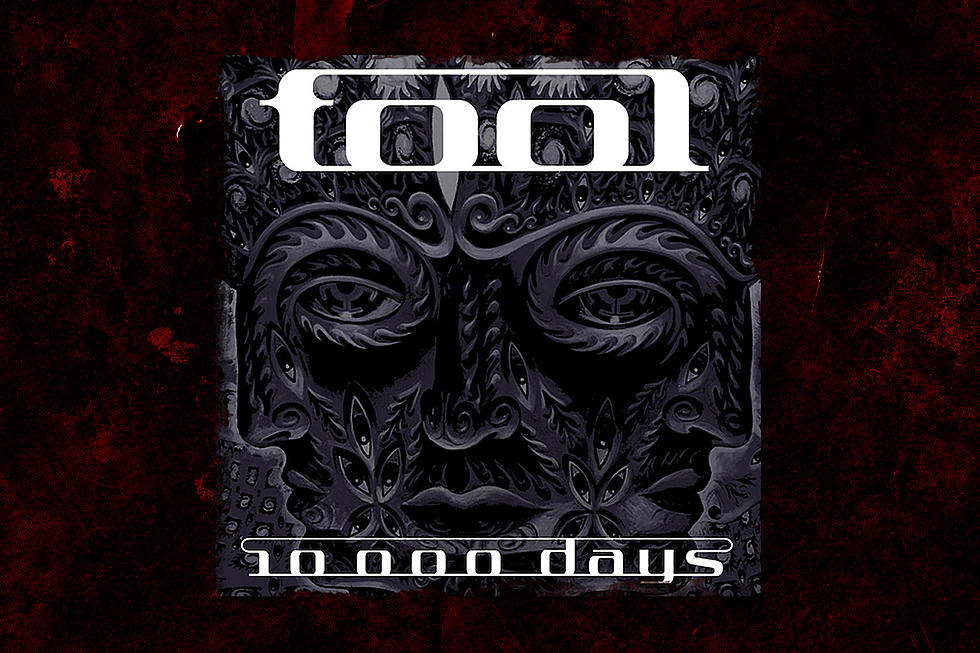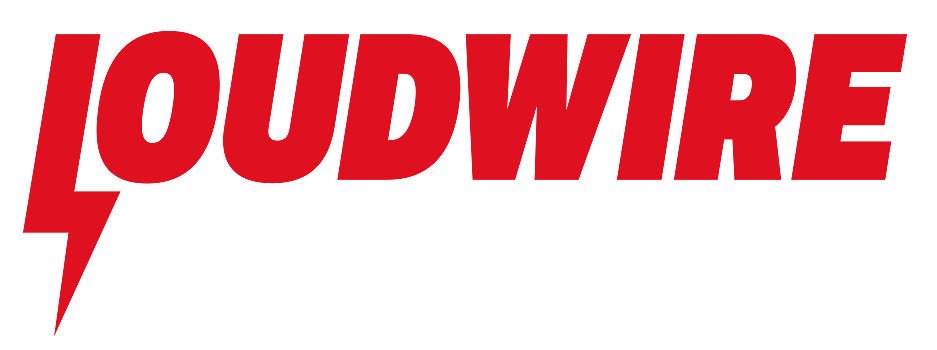
18 Years Ago: Tool Unleash ‘10,000 Days’
Happy anniversary for Tool's 10,000 Days album.
Progressive, psychedelic rock ninjas Tool didn’t take 10,000 days to complete the 2006 follow-up to Lateralus. But it sure felt that way for fans who were desperately waiting for the band’s fourth full-length release.
In actuality, more than 1,800 days passed between the two albums. The 10,000 Days title has been interpreted by most Tool philosophers to be a reference to the approximate period of time between singer Maynard James Keenan’s mom becoming incapacitated by a stroke when Maynard was 11 years old, and the time she died in June, 2003. Others have interpreted the title to be a reference to the amount of time it takes Saturn to revolve completely around the sun; this theory is legitimized by comments Keenan made about the philosophical concept of the Saturn return.
“That’s the time in your twenty eighth, twenty ninth year when you are presented the opportunity to transform from whatever your hang-ups were before to let the light of knowledge and experience lighten your load, so to speak and let go of old patterns and embrace a new life," he once explained to me. “It’s kind of the story of Noah, and the belly of the whale. You sink or swim at that point. And a lot of people don’t make it. Hendrix didn’t, Janis Joplin didn’t, John Bonham. Kurt Cobain didn’t quite make it past his Saturn Return. For me, starting to recognize those patterns, it was very important to start constructing songs that chronicled that process, hoping that my gift back would be to share that path and hope that I could help somebody get past that spot.”
Both theories make sense and probably hold relevance. Or maybe the album has nothing to do with either. Tool are the kind of elusive band that likes to play with people’s theories and expectations. One thing’s for sure: Tool released 10,000 Days in North America on May 2, 2006, and those who feared the band would stray from the crushing, experimental sounds of Lateralus breathed a smokey THC-laden sigh of relief as soon as they heard it. Like Lateralus, the album was an offbeat, angular excursion that required careful listening to digest. It featured a thrilling combination of songs that tumbled and ripped like a bag of nails in a whirring particle accelerator, and more atmospheric, psychedelic tracks that opened themselves to more introspective or confessional lyrics; in retrospect some turned out to be too confessional for the band’s enigmatic vocalist.
“I think probably the stupidest thing I could have done on 10,000 Days was put myself out there as much as I did with the tracks ‘Wings for Marie (Part 1)’ and ‘10,000 Days (Wings Part 2),’ Keenan said in an interview to promote the album. “I’ll never make that mistake again. It just took too much out of me – too much emotionally, mentally, physically – all those manifestations. Those songs were exploited and misconstrued, people were flippant and dismissive. I won’t be doing that anymore. And technically, ‘Wings’ is very difficult to pull off. If any one of us is off, it falls apart and makes that thing tragic, and that’s not a good song for me to have fall apart. It’s just too personal.”
Tool, "Wings for Marie (Pt. 1)"
While Keenan has a bittersweet relationship with some of the lyrics on 10,000 Days, he has no qualms with the mastery that went into the songwriting. Tool guitarist Adam Jones, drummer Danny Carey and bassist Justin Chancellor were obsessive about the music, approaching each song from a multitude of angles before committing to the final versions. Instead of going in with a clear idea of what kind of record they wanted to create, Tool shot from the hip, jamming in their practice space until they liked something they came up with; then they repeated the process ad infinitum.
“We had lots ideas from all the jams and crazy things that went on for Lateralus, so we had a few good starting points to go from,” Carey said. “We went into it thinking, ‘This is gonna be way easier for us than the last one,’ but in a lot of ways it wasn’t. We had all become bigger assholes, and everyone’s idiosyncrasies had become even more grinding on each other. But we were smarter and we knew that those are just our personalities, and at the same time we became more aware of how to give each other space and let them explore and do their own thing -- not that it makes you any happier about it when it goes down.”
Going into 10,000 Days, Jones was wary about becoming too jaded. Sometimes he felt like Tool had developed the Midas touch and didn’t need to work obsessively in order to achieve their desired results. Whenever he felt that way, he made sure to put even more effort into the songs than he thought they needed just so couldn’t possibly sell the band short.
Tool, "Rosetta Stoned"
“I think the first song we wrote was ‘Rosetta Stoned,' and that wasn’t easy to finish,” Jones said. “It involved a lot of trial and error and compromising with your band mates in the process of exploring every path that needed to be taken. I kind of compare it to painting. I take my time and try different colors. Or I may go back and sand a little bit to try to get a little bit of translucency. And sometimes the other guys were on the same page with me and sometimes they weren’t.”
Based on past experience, Keenan knew not to be in the studio when his band mates were in the mood to experiment. On prior albums he had tried writing to a tune that had been written only to have the basic rhythm change dramatically so by the time he was ready to perform what he had composed it no longer complimented the latest band arrangement. Keenan found the process endlessly frustrating, which is why, in 1999, he left Tool for a while to work on songs with his other band A Perfect Circle.
“You can tell which tracks on the album I was away for,” Keenan said. “They’re the ones that kind of meander off and go crazy and there are all these complicated turnarounds and loops. It requires some sort of form of psilocybin to enjoy – which is great. I love going away and coming back and having something that I get to enjoy because I wasn’t there in the kitchen helping cook it. I can just enjoy it on the table and go, ‘Oh, this is fun. This is tasty.’ And I can add my spice to it and take it to some other level or take it in a different direction lyrically or structurally.”
Tool, "The Pot"
Keenan remains proud of all of the songs Tool wrote for 10,000 Days. His favorites to perform, however are the more straightforward rockers like “The Pot,” and “Jambi,” which reminded him of the raw, primal music the band wrote for their first two releases Opiate and Undertow before they developed the technical skill to play in unconventional meters, insert abrupt rhythmic shifts and explore ebb and flow dynamics and jagged, totally unexpected phrasing.
“I was kind of hoping the album would bring back some of the energy we expressed on our early records,” he says. “It was very difficult to get a groove going on some of 10,000 Days because everything was so complex and choppy and like running up an uneven set of stairs with a blindfold and a wooden leg. I wanted to do some of that because I really enjoy the challenge of a puzzle, and putting lyrics to those complex pieces. But I was also looking forward to doing something that would be like running down a set of stairs with my eyes closed and know that I’m gonna land on my feet.”
Creating 10,000 Days involved plenty of hunting and pecking and waiting for the right moment when inspiration hit and everything came together. Unfortunately, those lightning strikes were few and far between and the album was created in fits and starts, like most of Tool’s best material.
“When you finally reach the finish line and the floodgates open there’s such a sense of relief,” Jones said. “And when you’re done, you’re going, “Okay, I wish next time when we start working on the new record we could just pick up where we left off, right at this exact moment.’ But it never works t hat way, and if it did, you’d just wind up redoing the same thing, which we never want to do.”
READ MORE: Every Tool Song, Ranked
10,000 Days debuted at No. 1 on the Billboard 200 chart, selling 564,000 copies during its first week. On June 2, 2006, the album was certified platinum by the RIAA.
“Having another plaque is nice I guess, but the real thrill of the record comes from the fact that we were true to these musical, magical moments that sometimes happen when the four of us get into a room together,” Carey said. “It’s unexplainable. I don’t know how that vibe happens, but it’s Tool and there’s nothing else that will ever be Tool. And that’s something I’ll always be proud of.”
Loudwire contributor Jon Wiederhorn is the author of Raising Hell: Backstage Tales From the Lives of Metal Legends, co-author of Louder Than Hell: The Definitive Oral History of Metal, as well as the co-author of Scott Ian’s autobiography, I’m the Man: The Story of That Guy From Anthrax, and Al Jourgensen’s autobiography, Ministry: The Lost Gospels According to Al Jourgensen and the Agnostic Front book My Riot! Grit, Guts and Glory.
43 Hard Rock + Metal Acts Who Deserve to Be in the Rock and Roll Hall of Fame
Gallery Credit: Chad Childers, Loudwire
More From Loudwire









